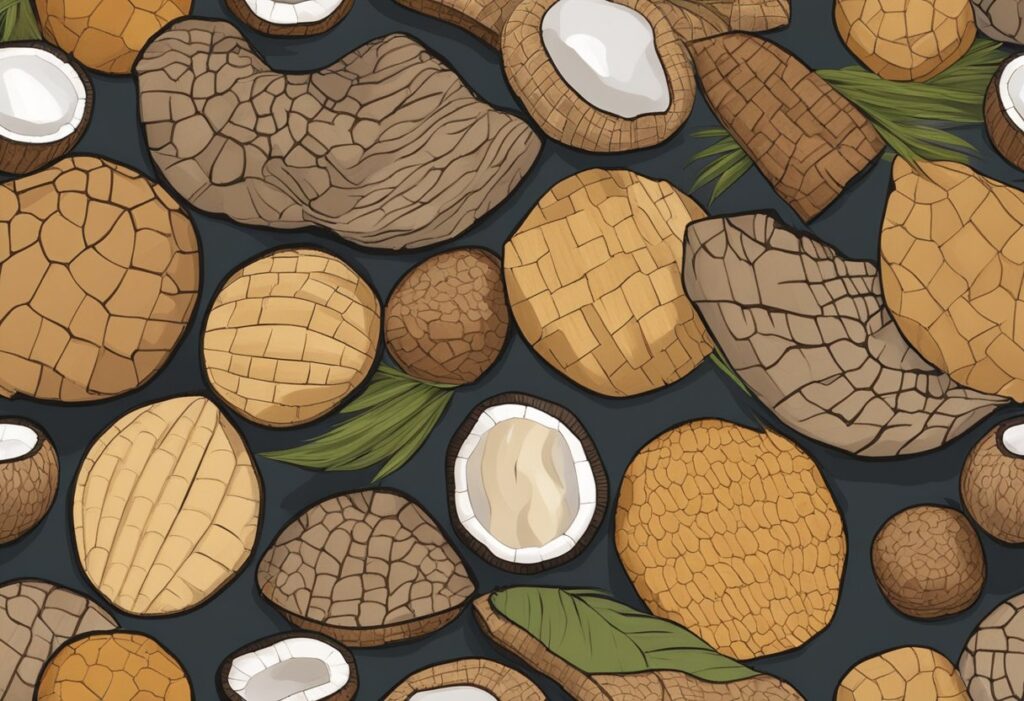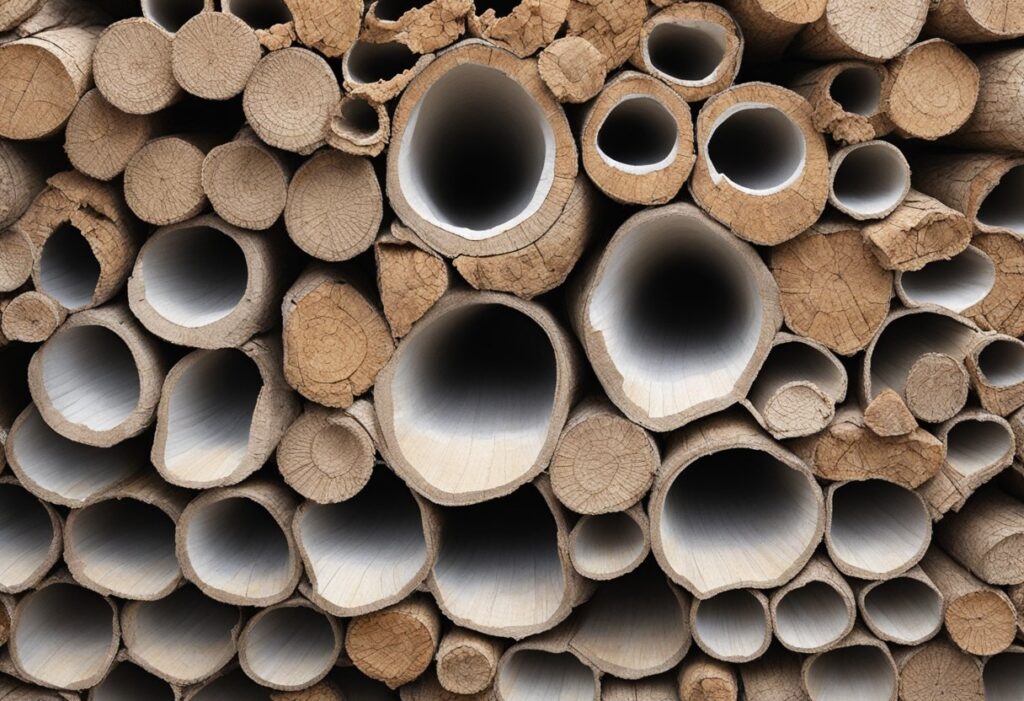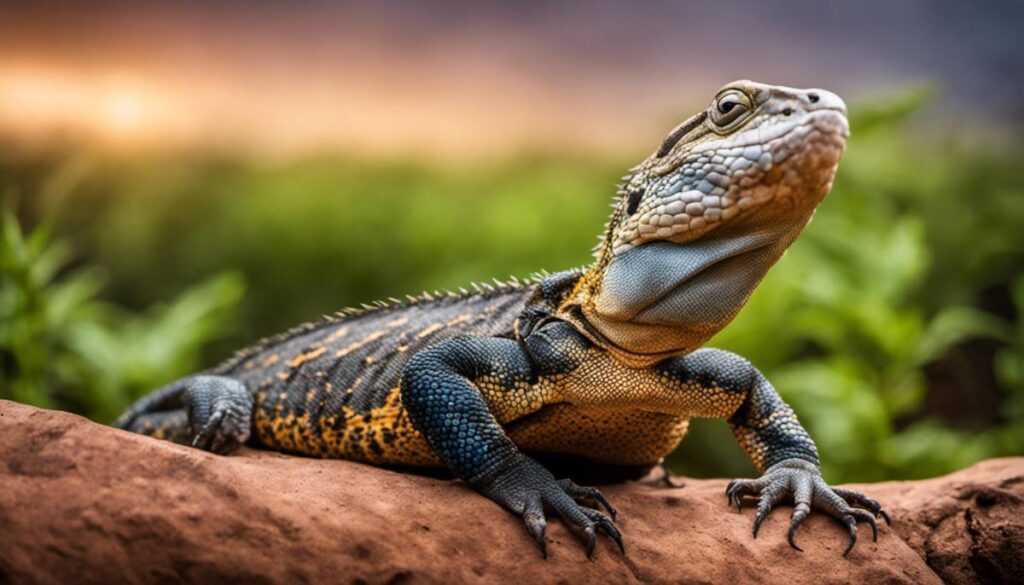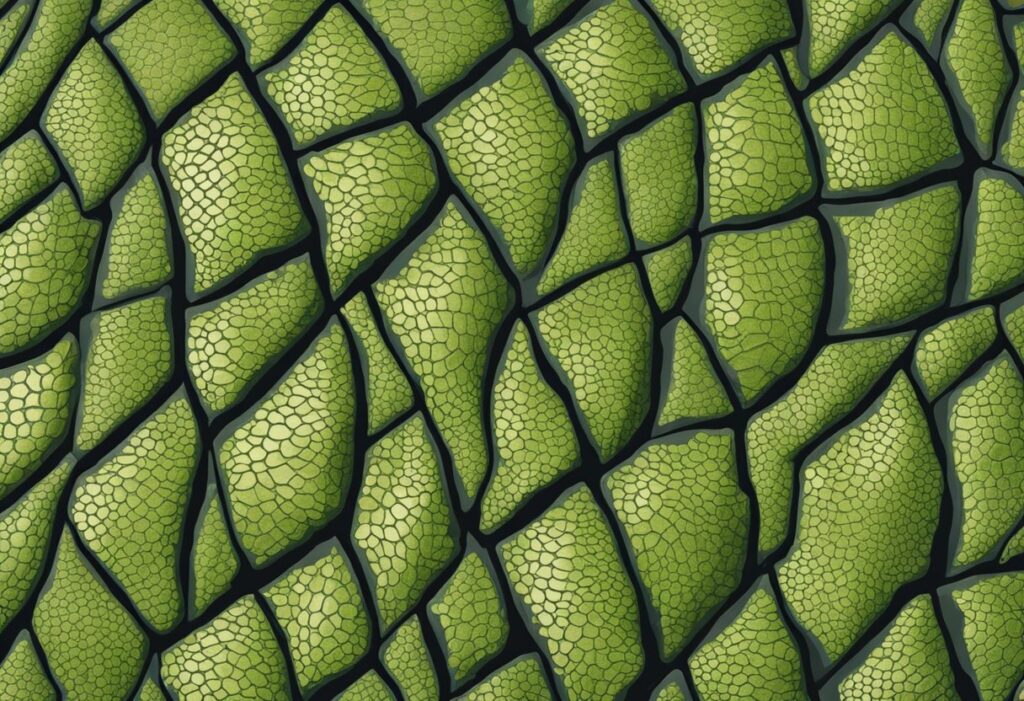Are you looking for the best materials for your reptile hides? Look no further! Providing your reptiles with a secure and comfortable hiding space is essential to their health and well-being.
Not only does it help reduce stress, but it also promotes natural behaviors and can even encourage breeding.

When it comes to choosing the best material for your reptile hide, there are a few options to consider. Natural materials like wood and cork provide a more realistic and naturalistic environment for your reptile, mimicking their natural habitat. However, these materials can be difficult to clean and may harbor bacteria and parasites. On the other hand, artificial hides made from plastic or resin are easy to clean and sanitize but may not be as aesthetically pleasing or natural-looking.
Another factor to consider is the size and shape of the hide. Reptiles come in all shapes and sizes, so it’s important to choose a hide that is appropriate for your specific species. A hide that is too small or too large can cause stress and discomfort for your reptile. Additionally, providing multiple hides throughout the enclosure can help create a more natural and comfortable environment for your pet.
Overall, choosing the best material for your reptile hide depends on your specific needs and preferences. Whether you choose a natural or artificial material, make sure to provide a hide that is appropriately sized and shaped for your reptile’s comfort and well-being.
Understanding the Importance of Reptile Hides

If you are a reptile owner, you know that providing your pet with a comfortable and stress-free environment is essential. One of the best ways to do this is by providing your reptile with a hiding place. Hiding places, also known as reptile hides, are essential for the well-being of your pet.
Reptiles require hiding places for several reasons. Firstly, hiding places provide a sense of security for your pet. In the wild, reptiles use hiding places to escape predators and to feel safe. By providing your pet with a hiding place, you are helping them feel secure and safe in their environment.
Secondly, hiding places are essential for regulating your reptile’s temperature. Reptiles are cold-blooded animals, which means they cannot regulate their body temperature like humans can. By providing your pet with a hiding place, you are giving them a place to cool down or warm up as needed.
-

Beaded Dragon Fan Exclusive: ‘Original Hipster’ T-Shirt – Wear Your Unique Style with Pride – Unisex t-shirt
£13.00 – £20.50 Select options This product has multiple variants. The options may be chosen on the product page -

Chinese Water Dragon Aquatic Mastery Tee: Dive into Elegance with Our Exclusive Reptile Enthusiast Shirt – Unisex t-shirt
£13.00 – £20.50 Select options This product has multiple variants. The options may be chosen on the product page
Thirdly, hiding places are crucial for promoting natural behaviors in your pet. In the wild, reptiles use hiding places to hunt, mate, and rest. By providing your pet with a hiding place, you are encouraging them to engage in these natural behaviors.
When it comes to choosing the best materials for reptile hides, there are several options available. Naturalistic hides, such as rocks, logs, and caves, are great choices as they provide a more natural environment for your pet. Half-log hides and burrowing hides are also great options, as they allow your pet to burrow and hide.
When choosing a reptile hide, it’s essential to consider the size of your pet. The hide should be large enough for your pet to fit comfortably inside but not too large that it loses its sense of security. It’s also crucial to consider the placement of the hide. The hide should be placed in a location where your pet feels safe but also where it can be easily monitored.
Overall, providing your reptile with a hiding place is essential for their care, stress reduction, security, and well-being. By choosing the right materials and placement, you can create a comfortable and natural environment for your pet.
Choosing the Right Materials for Reptile Hides

When it comes to creating a safe and comfortable environment for your reptile, choosing the right materials for their hides is crucial. Reptiles need hiding spaces to feel secure and reduce stress, and the type of material you use can impact their overall health and well-being.
Natural Materials
Natural materials such as rocks, cork bark, and wood are popular choices for reptile hides. These materials not only provide a naturalistic look to the enclosure but also mimic the hiding spaces found in the wild. Rocks and cork bark are great for creating naturalistic caves, while wood can be used to create half-log hides.
One of the benefits of using natural materials is that they are non-toxic and safe for your reptile. However, it’s important to make sure that the materials are free of pesticides or other harmful chemicals that could harm your pet.
Artificial Materials
Artificial materials such as styrofoam and plastic hides are another option for creating hiding spaces for your reptile. These materials are lightweight and easy to clean, making them a popular choice for many reptile owners.
One of the benefits of using artificial materials is that they can be molded into different shapes and sizes, allowing you to create custom hides that fit your reptile’s needs. However, it’s important to make sure that the materials are non-toxic and safe for your pet.
When choosing the right materials for your reptile hides, it’s important to consider the size and species of your pet, as well as their natural behaviors and preferences. By creating a safe and comfortable environment for your reptile, you can help promote their overall health and well-being.
DIY Reptile Hide: A Step-by-Step Guide

If you’re looking for an affordable and fun way to create a hide for your reptile, then a DIY reptile hide is the perfect solution. Not only will you save money, but you’ll have the satisfaction of creating something unique for your pet. In this guide, we’ll walk you through the process of planning, building, and finishing your own DIY reptile hide.
Planning the Hide
Before you start building your DIY reptile hide, you’ll need to plan out the design and shape. Consider the size of your reptile and the space available in their enclosure. You’ll also want to think about the materials you’ll be using. Common materials for DIY reptile hides include cardboard, foam, and clay.
Once you have a design in mind, create a template or sketch of the shape and size of your hide. This will help you stay on track during the building process.
Building the Hide
Now that you have a plan in place, it’s time to start building your DIY reptile hide. Here are the steps to follow:
- Create a base for your hide using cardboard or foam. This will be the foundation for the rest of the hide.
- Use expanding foam to shape the hide. This will allow you to create a custom shape that fits your reptile perfectly.
- Once the foam has dried, use a hot glue gun to add texture and details to the hide. You can add rocks, branches, or other decorations to make it look more natural.
- Let the glue dry completely before moving on to the next step.
Finishing Touches
The final step in creating your DIY reptile hide is to add the finishing touches. Here are a few ideas:
- Use a spray sealant to protect the hide from moisture and bacteria.
- Paint the hide with non-toxic paint to give it a more natural look.
- Add a removable top to make cleaning and maintenance easier.
By following these steps, you’ll have a unique and affordable hide for your reptile. Remember to always use non-toxic materials and to consider the safety and comfort of your pet when building their enclosure. Happy DIY-ing!
Best Store-Bought Reptile Hides

If you’re looking for a quick and easy solution for your reptile’s hiding needs, store-bought reptile hides are the way to go. Here are some of the best options available on the market:
Zilla Herp Hotel
The Zilla Herp Hotel is a great option for reptile owners who want to give their pets a spacious and comfortable hiding spot. It’s made of high-quality materials, and its unique design allows for easy cleaning and maintenance. The Herp Hotel is available in different sizes, so you can choose the one that best fits your pet’s needs.
Exo Terra Rock Outcrops
If you’re looking for a natural-looking hide for your reptile, the Exo Terra Rock Outcrops are an excellent choice. These hides are made of high-quality resin and are designed to blend in seamlessly with your pet’s environment. They come in different sizes and shapes, and they’re perfect for reptiles that like to climb and explore.
Zilla Durable Den
The Zilla Durable Den is a great option for reptile owners who want a hide that’s both durable and affordable. This hide is made of sturdy plastic, and it’s designed to withstand the wear and tear of everyday use. The Durable Den is available in different sizes, and it’s a great option for reptiles of all kinds.
Zoo Med Repti Shelter™ 3-in-1 Cave
The Zoo Med Repti Shelter™ 3-in-1 Cave is a versatile hide that’s perfect for reptiles that like to explore and hide in different spots. This hide is made of high-quality materials, and it can be used as a shelter, a basking spot, or a humid hide. The Repti Shelter™ is available in different sizes, and it’s a great option for reptile owners who want a hide that can serve multiple purposes.
When it comes to price, store-bought reptile hides can be quite affordable, especially if you purchase them from a pet store. However, some hides can be more expensive than others, depending on the materials and design. Regardless of the price, it’s important to choose a hide that’s safe, comfortable and meets your pet’s needs.
Maintaining and Cleaning Reptile Hides

Congratulations on choosing the perfect hide for your reptile! Now that you have made a decision, it is important to keep it clean and well-maintained. Proper cleaning and maintenance of reptile hides can help prevent bacterial and fungal infections and ensure that your reptile is happy and healthy.
When selecting a hide, it is important to choose one that is easy to clean. The material should be durable and able to withstand cleaning without breaking or cracking. Hides made of clay or other porous materials can be difficult to clean and may harbor bacteria, so it is best to avoid them.
Humidity is also an important factor to consider when maintaining and cleaning reptile hides. High humidity levels can lead to the growth of mold and bacteria, so it is important to monitor the humidity levels in your reptile’s enclosure and adjust as necessary.
When cleaning your reptile hide, be sure to remove any substrate or debris that may have accumulated inside. You can use a soft-bristled brush to gently remove any dirt or debris. If the hide has any sharp edges, be sure to smooth them out to prevent injury to your reptile.
To clean your reptile hide, simply scrub it clean with a reptile-safe disinfectant and rinse thoroughly with water. You can also soak the hide in a mixture of water and disinfectant for a few minutes to ensure that it is thoroughly cleaned. Be sure to rinse the hide thoroughly to remove any remaining disinfectant.
It is also important to clean your reptile’s water dish regularly to prevent the growth of bacteria. You can use a reptile-safe disinfectant to clean the dish or simply replace it with a new one.
In conclusion, maintaining and cleaning reptile hides is an important part of keeping your reptile healthy and happy. Choose a hide that is easy to clean and durable, monitor humidity levels, and clean the hide regularly with a reptile-safe disinfectant. By following these simple steps, you can ensure that your reptile’s hide remains clean and comfortable for years to come.

